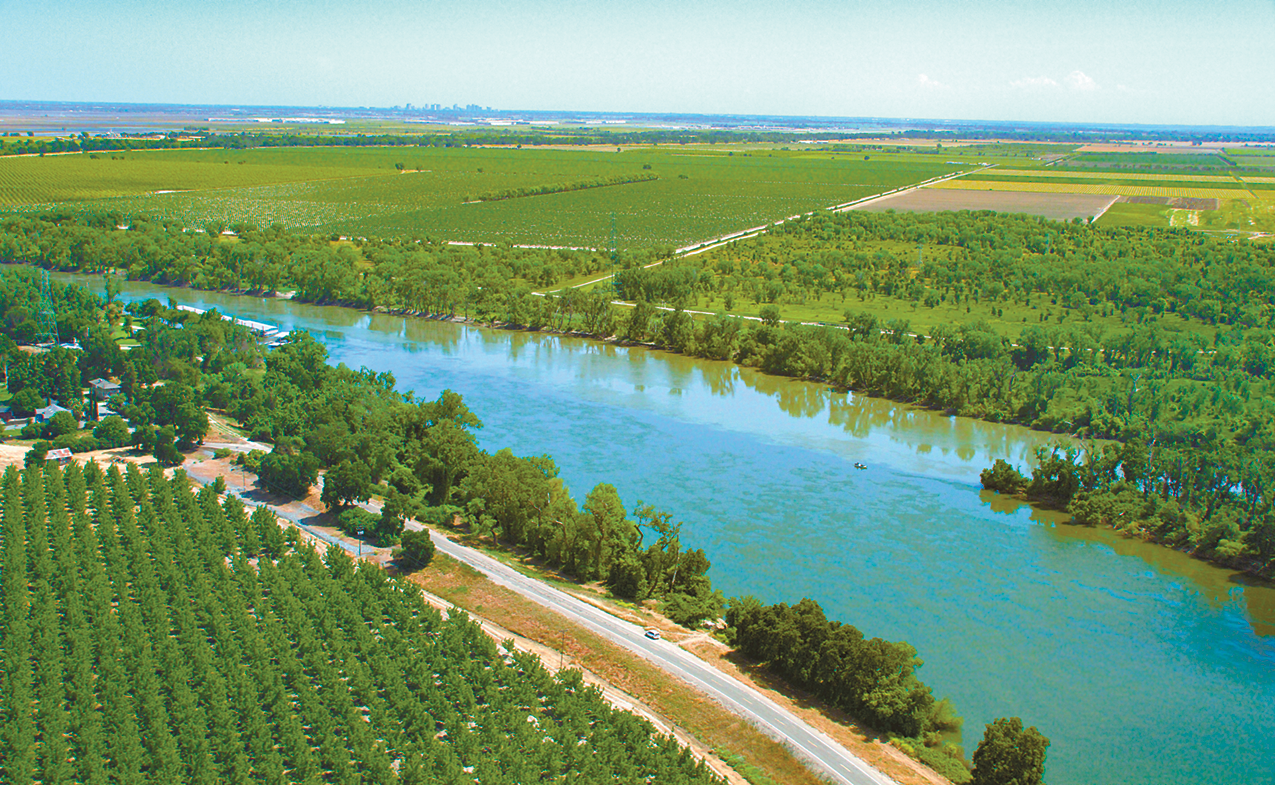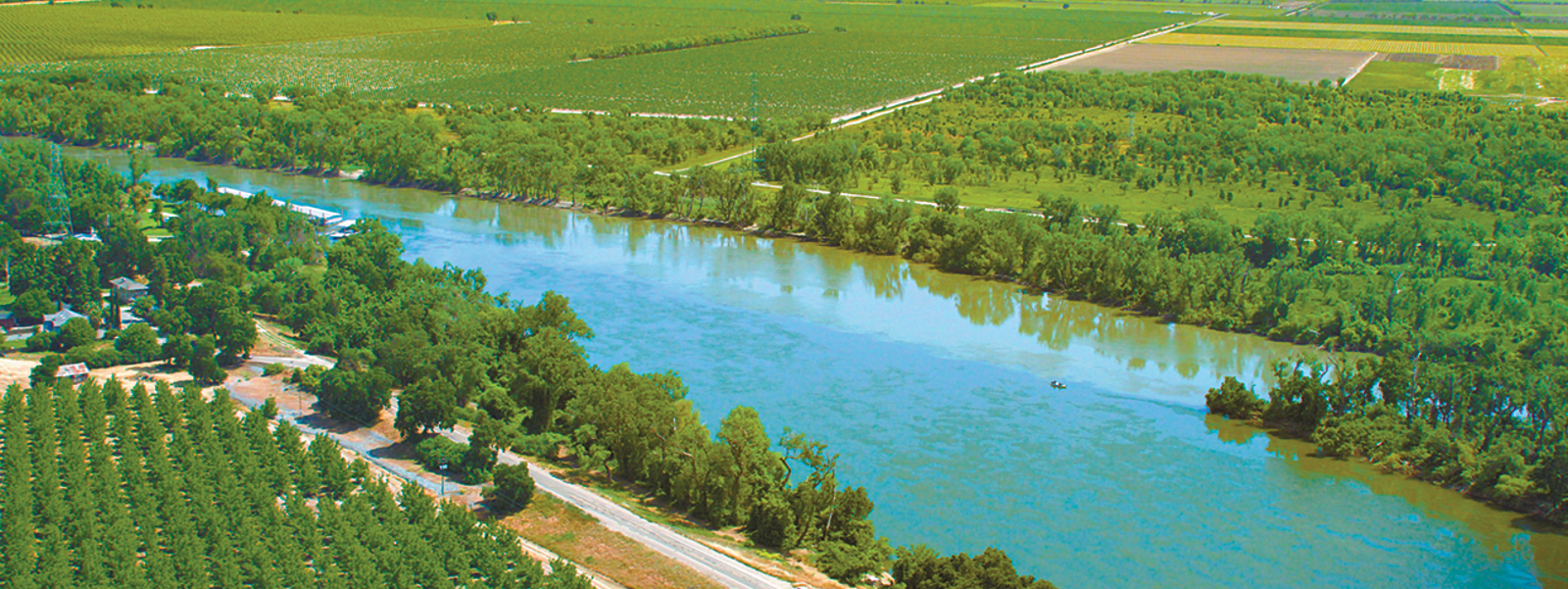Commentary: How California's budget mess may harm agriculture

Farms fan out near the confluence of the Sacramento and Feather rivers. The California budget crisis could result in massive funding cuts in water programs and sustainable farming initiatives.
Photo/California Department of Water Resources


By Christopher Reardon
California rightly celebrates its technological innovations and cultural diversity, as well as its robust economic standing, which approaches that of Germany, the world’s 4th-ranked economy.
Agriculture is a key component of California’s economic engine, with its farm prowess extending far beyond the Golden State. In 2022, California agricultural production totaled $59 billion, up by $13.8 billion from 2017, with the state producing more than one-third of America’s vegetables and three-quarters of its fruits and nuts.
The impact of this agricultural abundance of more than 400 crops—from leafy greens to almonds, citrus to winegrapes, strawberries to tomatoes—is profound. California agriculture is a critical driver of economic growth, providing jobs, income and stability, particularly in rural areas.
Yet, California is currently in the throes of a budget mess—and that isn’t good news for the state’s critical agriculture sector. This year, the state is facing a $38 billion budget deficit that is expected to worsen. This is on top of a $31 billion fiscal deficit in 2023.
While there is much to celebrate in California, there are storm clouds on the horizon related to fiscal mismanagement in Sacramento and potential future regulatory requirements impacting our farmers, ranchers and agricultural businesses.
Continued budget deficits could affect issues such as the implementation of zero-emission vehicles, electrification of farms and ensuring adequate resources to keep investing in needed water management projects. The budget crisis could also impact future investment in research and innovation, which would limit advancements in crop technology that could enhance future farming practices.
Cuts are looming for the state’s Healthy Soils, Livestock Enteric Methane Emission Reduction, Pollinator Habitat and State Water and Efficiency and Enhancement programs. These monies provide grants to meet some of the challenges California agriculture is addressing on issues of water, air quality and climate change.
It is important to provide continued support for these programs through the California Department of Food and Agriculture. This is because the preservation of biodiversity, soil health and water quality is not just a goal but a fundamental aspect of California’s agricultural ethos, aligning with the state’s broader commitment to environmental sustainability.
California’s commitment to farming practices sets a national standard for environmental stewardship. Farmers in the state embrace innovative techniques, such as precision agriculture and water conservation measures to ensure the responsible use of natural resources.
In addition, connections between agriculture and surrounding communities foster a resilient economy, ensuring that prosperity extends beyond the farm gate. Besides the bounty of food produced by our farms and ranches, California agriculture supports employment in food processing, transportation, marketing and research.
Agriculture contributes to the vitality of our communities, especially in rural California, where small towns provide the home base for many farms, ranches and agribusinesses. The economic livelihood of these communities is closely tied to the success of local agriculture.
Agriculture often shapes the identity and culture of rural communities. The traditions, practices and festivals associated with farming contribute to a strong sense of community and shared values. These connections also extend between rural communities and local food systems, supporting farmers markets, farm-to-table initiatives and Community Supported Agriculture programs.
Additionally, these areas often host agricultural research institutions, University of California Cooperative Extension services and innovation hubs that play a crucial role in advancing agricultural practices in disseminating knowledge and supporting farmers with the latest technologies and research.
We will know more about California’s budget picture when a revised state budget comes out in May. But Gov. Gavin Newsom’s budget proposal in January would cut statewide spending on water-related programs from $8.7 billion in 2022 to $7.3 billion. Funding for water recycling and groundwater remediation would drop from $622 million to $348 million. Additionally, the proposal strips away $79 million from sustainable agriculture programs.
It is important to consider potential impacts of the budget crisis on California agriculture and our rural communities. Agriculture is truly more than just one sector in the vast economy of the Golden State. It is a cornerstone and driving force in America’s agricultural landscape.
From economic prosperity and job creation to environmental stewardship and global influence, the importance of agriculture in California extends far beyond farm fields. That is why a stable budget environment that strikes a balance between current obligations and long-term investment is important to all of us.
As we celebrate the abundance that graces our tables, let us acknowledge and champion the farmers and agricultural communities that ensure our food supply and support a resilient future.
(Christopher Reardon is director of governmental affairs for the California Farm Bureau. He may be contacted at creardon@cfbf.com.)




